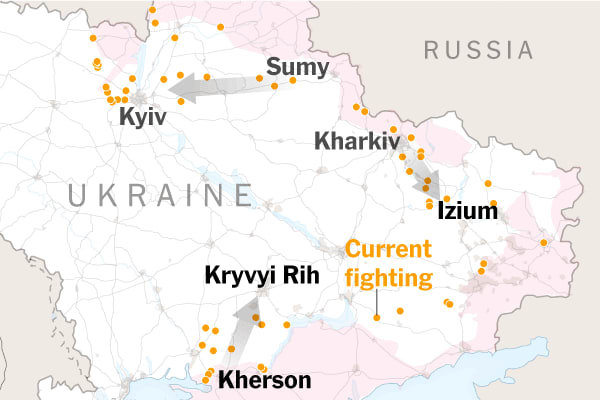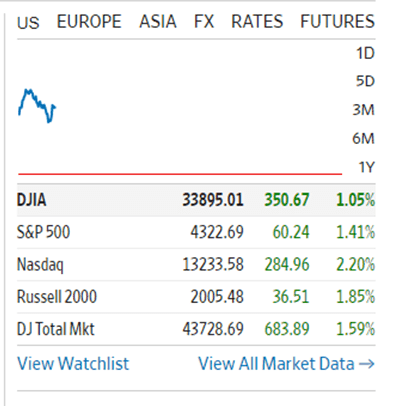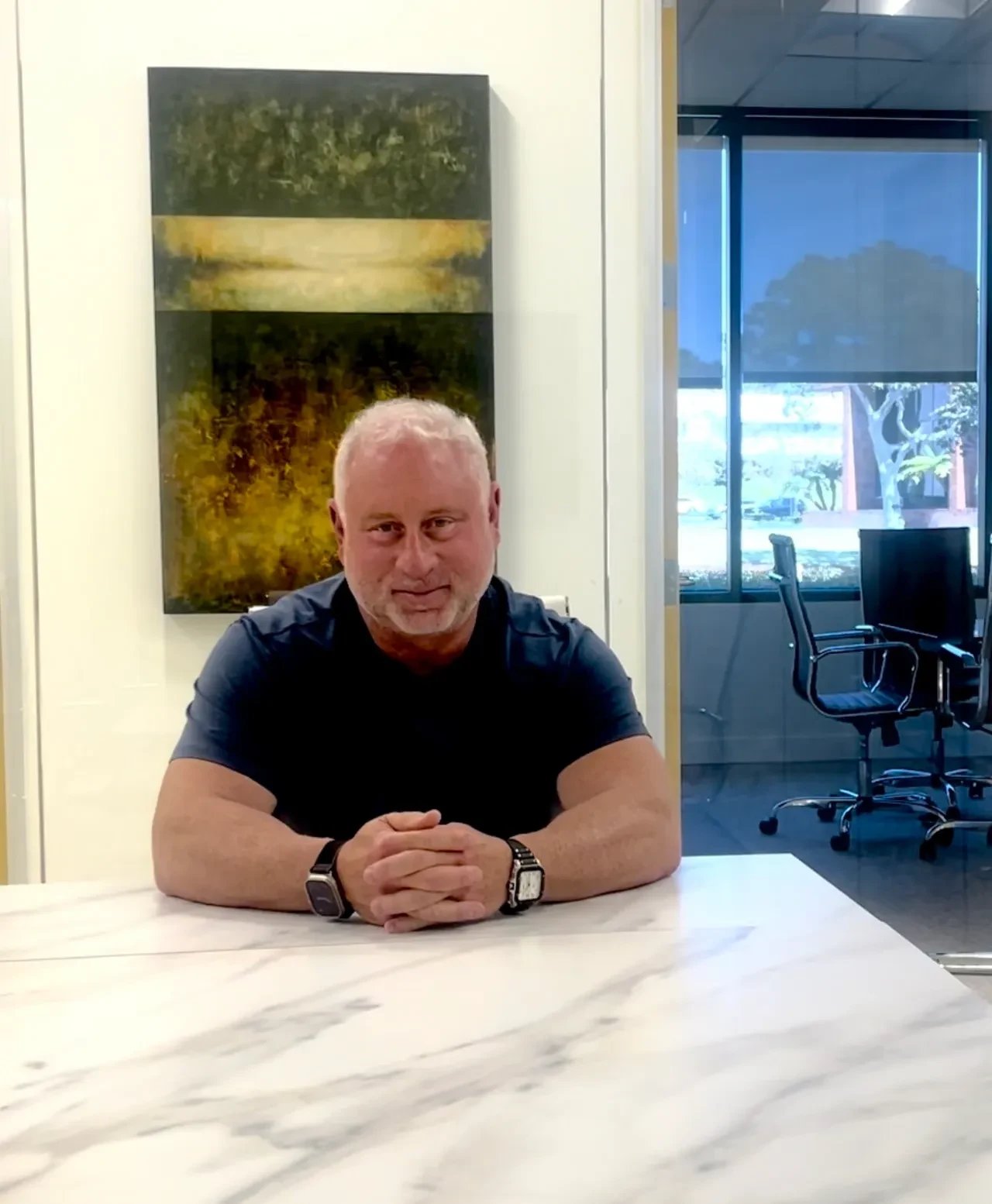Let’s say you have a pain in your side that lasts longer than the usual stomach ache. Days go by and still you’re uncomfortable. A week or two passes and you’re pretty much consumed with dire thoughts so, finally, you go to the doctor. Whatever you find out, once you know the diagnosis, you can plan a strategy for managing it. Simply understanding the root cause of your discomfort enables you to move forward.
Today’s post is about the discomfort of things we don’t know and how it’s those that can hurt us most, financially and otherwise, depending on how we react.
Next month will be the two-year anniversary of this blog, a place in which I try to give investing-strategy insight gained over years as a professional trader, venture capitalist and owner of a successful real estate brokerage and a proptech start-up. I started this shortly after the pandemic upended life as we knew it and at the time, it seemed that things couldn’t get much more unpredictable. Fast forward to today and here we are, with even more unknowns swirling around us – and these make investing a tricky road.
Here’s my take on where things stand and the road I’m walking so as not to undo the good that I’ve done for my own investments as we move forward.
Major unknowns
From an investment perspective, today we’re at the point of pain without a diagnosis and it could be some time before we have a clearer path on which to tread. Here are the major unknowns that will continue to cause anxiety in the markets and in our lives, too.
As I write this, geopolitical uncertainty is the most significant factor that has the potential to undermine many investors. Because Putin’s war with Ukraine is driven by ego and no one knows just how far he’s willing to go to satisfy his urge to reunite the former Soviet Union, the entire world is watching from the precipice of a potential world war. Adding fuel to Putin’s fire is that by all accounts,
Russia is quickly falling into economic disarray.

Another significant unknown is the tack that China will take. There are reports that Putin has approached China for military and economic support and if that’s true, this could be a major pivot point in the current situation. If China takes sides – in particular, if China takes Russia’s side – from my perspective, it will undoubtedly cause severe economic, military and humanitarian consequences. But personally, I don’t think that China wants to get involved to that level, as there’s so much at stake for this enormous nation’s 1.4 billion people. Certainly, that’s my hope.
It’s also my hope that this humanitarian and military disaster in Ukraine has made China’s leaders less inclined to try for a takeover of Taiwan – another potential disaster with long-term global ramifications.
Just when things were looking up on the pandemic front – masks have come off, kids have returned to school, people have returned to offices and are flocking back to cities and towns that they abandoned to shelter from illness –
we’re now hearing about surges in China, Europe and elsewhere. What’s not known yet is how transmissible and how potentially debilitating or deadly a new variant or subvariant may be and this, too, has us on tenterhooks while we wait for updates.
Inflation is here and will likely stick around for a while, that much we know. What we don’t know is just how bad it will get. We’re already facing rising prices in just about every aspect of daily life and this, in itself, will cause some level of disruption in our economic rebound. If it’s coupled with another pandemic surge stateside, or if it comes with increased involvement in the containment of Russia, then it’s likely to get much worse before it gets better.
And on Wednesday, the Fed made the first of its planned interest-rate hikes and
according to recent updates, policymakers and analysts expect up to six more increases this year. While the first quarter-point rise will barely register for most borrowers, it’s the combined impact of that with the other unknowns that makes me feel anxious.
I’ve said before that managing inflation is as much an art and social science as it is an economic challenge and in times like these, it’s beyond the relatively simple supply/demand equation. Instead, it becomes ingrained in our collective psyche, which is already uneasy from pandemic challenges and geopolitical unrest. And the world is much different now than it was in the 1980s, the days when economist and then-Fed Chair Paul Volcker successfully helped to end a
decade-plus stretch of extreme inflation (peaking at more than 14% in 1980) to reign it back to three percent by 1983.
Markets will initially react favorably to early rate hikes, as the potential to get inflation under control is positive news, even if subsequent increases dampen borrowing down the line. Of course, by the time you read this, it could be plummeting again.
What to do now
In times like these, there are two paths that I recommend. One is to wait things out a bit – there’s so much volatility, with enormous swings day to day and even hour to hour that unless you’ve got an incredibly high tolerance for uncertainty (or a lot of money to play with), sitting on the sidelines isn’t a bad strategy.
The other option is to look for opportunities that are likely to afford some measure of protection and possibly growth and that are nearly always safer bets, which is the strategy that I’ll be taking.
To this end, I’ll refer you back to past posts on value investing,
Where Are the Bright Spots? and Pay Attention, which talk about market latency and the need to read the tape, pay attention and predict human behaviors in the months ahead and to make decisions based on your best understanding of these facets of investing. My personal strategy will be to stay on course with those things that I know will be alright in the long run – energy, technology, healthcare and residential real estate likely among them (however, I don’t think that oil has much more upward pricing movement capability without demand significantly dropping).
These kinds of proven inflationary hedges are working effectively but as I pointed out in last week’s post,
Inflation vs. Valuation, it’s important to monitor them for potential erosion. That’s why I personally look for A+ assets to invest in now. For stocks, these may be a mix of longstanding leaders and smart startups. For real estate, I’d look to investment opportunities that focus on luxury and primary market properties as I wrote about in previous blogs.
What I’ll also likely do is stay away from the “bargains” that are getting scooped up, as I don’t believe that they’ll be as good long term – in my book, it always comes back to value. As for alternative plays – crypto and NFTs, in particular – if you’ve read this blog before, you know I won’t be heading down those roads, no matter what kind of media play they get.
And if you’re up for more adventure, I’ll refer you back to a post from early February,
Volatility: Where Alpha Thrives. There, you’ll learn some of the strategies that I take during highly volatile times to try and find opportunities within the chaos.
Three strategies I recommend
Anyone who has read this blog before knows that I won’t recommend specific stocks or other opportunities and that my goal, instead, is to help you learn to be better at this. To that end, here are three things I recommend over the coming weeks and months:
- Act defensively: If you’re already invested, do what you need to do to protect your portfolio from the major unknowns.
- Invest in high-quality assets. Well-run companies that offer products and services that can weather the current unknowns tend to be good bets. Look for companies that offer solid value: Intellectual property, tangible products and services, a top management team, innovation, cash in the bank and sustainable net profitability. For real estate, primary-market properties will always be good long-term investments (take a look back at this post for insight into intrinsic and extrinsic qualities that impact markets for more on that).
- Continue to read the tape: Pay attention to everything, then try to cut through the clutter and make wise decisions. Now’s not the time for knee-jerk reactions but, rather, a thoughtful strategy. Situational awareness is key to stability and growth.
What we don’t know can hurt us, especially if we’re gung-ho on trying to game the uncertainties. Keep the long game in mind and work within your comfort level to protect and possibly grow what you have now. By doing so, you’ll be much better positioned when the dust, hopefully and eventually, settles and the horrors of war end as quickly as possible.








